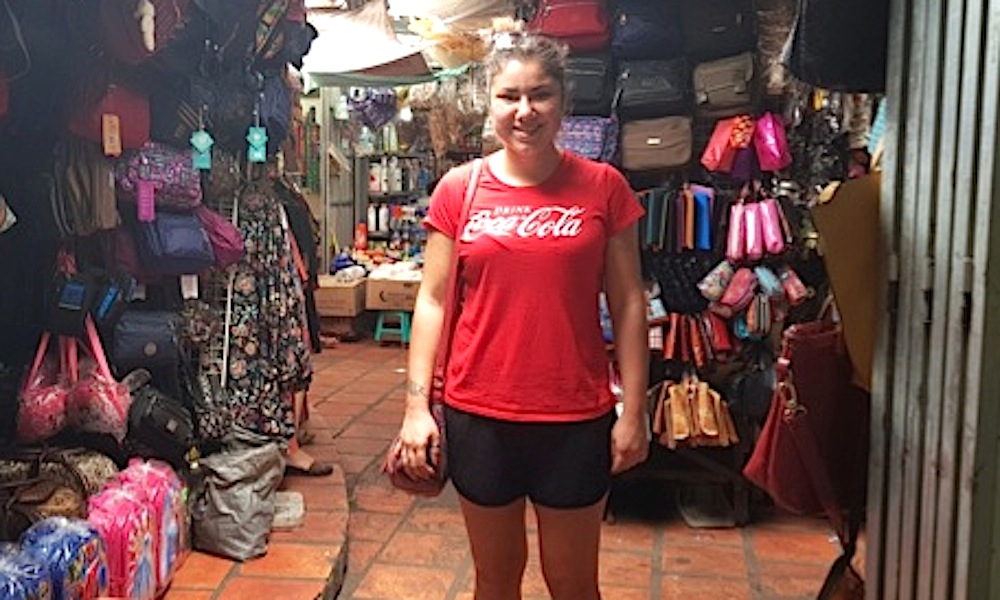
A visit to Phnom Penh, capital of Cambodia, brings many sights, sounds and smells that can cause one to re-evaluate one’s thoughts on humanity, as Lainey Quinn (Little Miss Sunray) discovered as she began her Asian adventures.
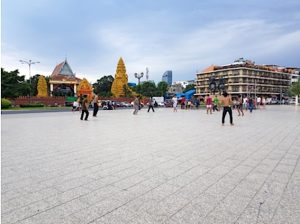
Within an hour of landing in Phnom Penh airport, I was weaving through chaos and traffic on the back of a motorbike taxi, clutching on for dear life. My knuckles were white and my face was pale by the time I reached my destination – the Old Market.
Motorbikes and tuk-tuks are the main forms of public transport in Cambodia. Both are hairy experiences until you get used to it. There are no rules of the road and motorbikes carrying families of up to five people veer dangerously close to traffic. No one seems to mind though and there never seem to be crashes.
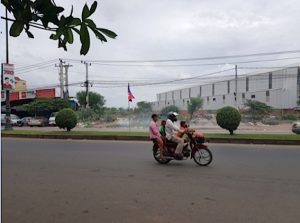
Phnom Penh isn’t just insane traffic. It’s rubbish burning on the side of the road, dirty food stalls with steaming carcasses, and women carrying platters of cooked maggots on their head. It’s golden temples and monks with shaved heads wearing orange robes. It’s severe poverty combined with wealth. Many Cambodians work as taxi drivers or sell food on the side of the road in makeshift wooden stalls or in the markets. The quality of life for them is low and many are restricted as to how much they can earn.
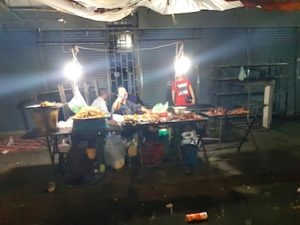
It seems that if a Cambodian can speak good English, their opportunities increase and so does their pay-cheque. They can get jobs as tour guides, waitresses or in hostels/hotels. On many streets in Phnom Penh, you will find tiny wooden shacks and crumbling houses as well as luxury hotels and fancy cocktail bars – all on the same street. I saw this in Cuba as well and I once again found myself questioning humans. Why can’t the rich share their wealth when there is blatant poverty on their doorstep?!
The people of Cambodia also remind me of when I was in Cuba – they live in squalor but are very friendly towards tourists and Westerners. Not many can say a word of English, but they speak through their smiling eyes and body language. Most try to communicate with you despite their lack of English, even if it’s just asking you if you want to buy a spiced frog (a popular Cambodian snack) or take a tuk tuk. My most used phrase these days is “Ate Akun”, meaning “No, thank you” in Khmer.
Markets are a huge part of Phnom Penh. There is Central Market where you can easily get lost in the narrow pathways of rows and rows of clothes, shoes, electronics and food, all for under $10. Then there’s the Russian Market, Night Market and Old Market, where it is not as crammed as Central Market but the smell is worse.
I gave the Old Market a new name – the Meat Market. Walking through the dingy alleyways of the market past women skinning, de-feathering and gutting all sorts of animals, is an experience not just for the eyes but for the nose. I had to watch every step I took in case I stepped on chicken brains or fish guts. The animals are taken there alive, and the killing and preparing happens right in front of your eyes.
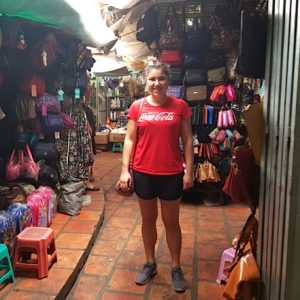
As well as exploring markets and getting deliberately lost in the labyrinthine streets of Phnom Penh, there were two very important places I visited during my trip: S-21 Torture Prison and the Killing Fields. These are both sites that were overtaken by the sadistic Communist Khmer Rouge Regime during 1976 – 1979. The regime, led by Pol Pot, a former schoolteacher (turned mass murderer), was powered by the torture, interrogation and savage slaughter of nearly three million men, women and children.
The sites have been turned into museums but are still almost replicas of what they looked like when they were used as death centres. I found myself face-to-face with thousands of skulls and bones, photographs of thousands of cruelly murdered people, and equipment that was used to torture men, women and children.
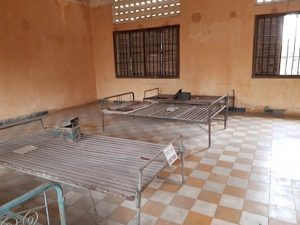
At S-21, there is still blood on the floor in some rooms and fingernail scrapings along the staircase walls. The rooms that were used to torture the prisoners have wooden desks behind which the interrogators would have sat. In front of the desks, are bed frames on which the prisoners were made to lie down on and the brown, metal shackles that bound them to the frame are still present. It was here that many were accused of working for the CIA-KGB and were coerced into giving a confession.

Furthermore, there is a collection of headshot photographs from when the prisoners first entered S-21. Looking at the faces of the people as they were photographed by their captors, you can’t help but wonder what was going through their heads. Some people have blank, vacant expressions implying they know what is to come, while others look confused. Some have blood on their faces and some are even smiling. It’s unfathomable how the Khmer Rouge took pride in their vast photography and ‘confession’ collection and used them to prove to their leaders that they were true to the regime.
The photographs were hard to look at, but they are a true portrayal of just how cruel humans can be towards others. I believe that everyone, especially in the Western world, should know about the true events that occur during civil and international wars. It is important that we know what humans can do to each other because it doesn’t just affect people in poor countries. There is too much dismissal, denial and misinformation in the Western world about humanitarian suffering and collateral damage because of lunatic groups such as the Khmer Rouge.
Visit Lainey’s blog to find out more about her travels to Cambodia, Australia and Cuba!




